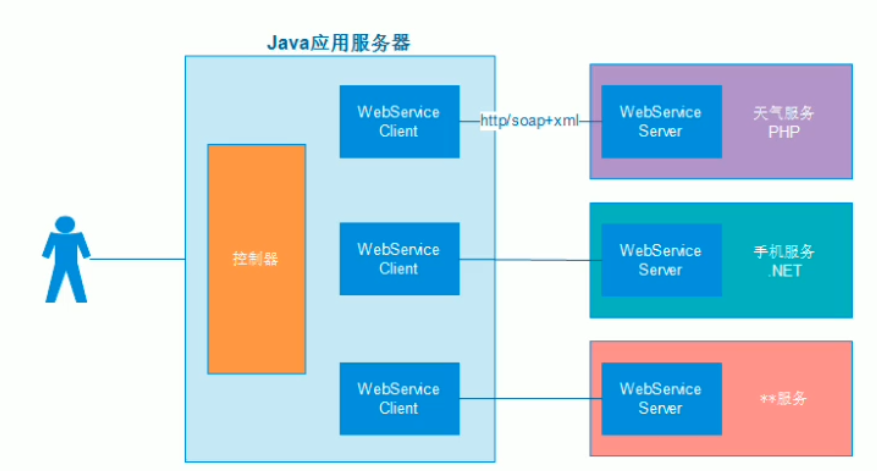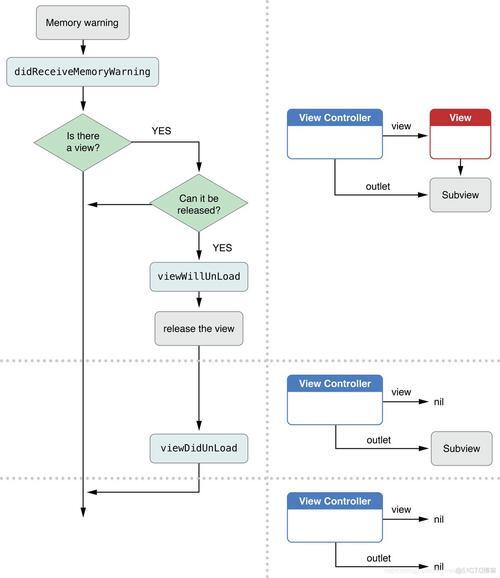构建高性能Java WebService在Linux环境下的实践指南?Java WebService在Linux下如何优化?Linux下Java WebService怎么优化?
** ,《构建高性能Java WebService在Linux环境下的实践指南》聚焦于在Linux系统中部署和优化Java WebService的关键策略,选择高性能框架(如Spring Boot或Apache CXF)并启用NIO(如Netty)以提升并发处理能力;结合JVM调优(堆内存配置、GC算法选择)减少延迟,Linux层面需优化内核参数(文件描述符限制、TCP缓冲区大小),并通过Nginx实现负载均衡与静态资源缓存,数据库连接池(如HikariCP)和异步处理(CompletableFuture)可进一步降低响应时间,容器化部署(Docker+Kubernetes)和分布式监控(Prometheus+ELK)确保可扩展性与故障快速定位,通过压测工具(JMeter)验证优化效果,实现高吞吐、低延迟的WebService服务。
WebService技术概述
WebService核心概念
WebService是一种基于Web的分布式计算技术,它通过标准化的HTTP/HTTPS协议进行跨平台通信,使用XML(SOAP)或JSON(REST)等结构化数据格式实现系统间的数据交换,这种技术架构使得运行在不同操作系统、使用不同编程语言的应用程序能够无缝集成,是现代企业系统互联的重要技术手段。
WebService的核心特性包括:
- 平台无关性:服务提供者和消费者可以运行在任何支持HTTP和XML/JSON的平台上
- 语言中立:不同编程语言开发的系统可以相互调用
- 松耦合:服务接口与实现分离,便于系统演进
- 标准化协议:基于开放标准(SOAP、WSDL、UDDI等)
- 可扩展性:支持通过中间件扩展功能
- 可发现性:支持通过服务注册中心进行服务发现
Java生态中的WebService实现
在Java技术栈中,主流的WebService实现方案包括:
JAX-WS (Java API for XML Web Services)
- 基于SOAP协议的企业级解决方案
- 支持WS-*标准系列(WS-Security、WS-ReliableMessaging等)
- 适合需要严格事务控制和复杂消息交换的场景
- 提供WSDL优先和代码优先两种开发模式
- 典型实现:Metro、Axis2、CXF
JAX-RS (Java API for RESTful Web Services)
- 基于REST架构风格的轻量级方案
- 使用HTTP标准方法(GET/POST/PUT/DELETE/PATCH)
- 支持多种数据格式(JSON/XML/Protobuf等)
- 更适合移动应用和现代Web应用
- 典型实现:Jersey、RESTEasy、Apache CXF
Spring Web Services
- 与Spring生态深度集成
- 支持契约优先(Contract-first)开发模式
- 提供强大的消息处理机制
- 与Spring Security无缝集成
- 支持SOAP和REST两种风格
本文将重点解析JAX-RS(RESTful)和Spring Boot WebService这两种现代化实现方案的技术细节和实践方法。
Linux环境下Java WebService开发实践
开发环境配置
在Linux系统(推荐Ubuntu LTS或CentOS Stream)上搭建Java WebService开发环境需要以下组件:
| 组件 | 推荐版本 | 作用说明 |
|---|---|---|
| JDK | OpenJDK 11/17 | Java运行环境 |
| Maven | 8+ | 项目构建和依赖管理 |
| 应用服务器 | Tomcat 9+/Jetty 10+ | 可选,用于传统部署 |
| 测试工具 | Postman/cURL | API功能测试 |
| IDE | IntelliJ IDEA/VSCode | 开发工具(可选) |
| Docker | 10+ | 容器化开发环境 |
Ubuntu系统安装示例:
# 更新软件源 sudo apt update && sudo apt upgrade -y # 安装OpenJDK和Maven sudo apt install -y openjdk-17-jdk maven docker.io # 验证安装 java -version mvn -v docker --version
基于JAX-RS构建RESTful服务
JAX-RS作为Java EE标准API,其参考实现Jersey和WildFly默认的RESTEasy都是企业级应用的热门选择。
项目结构配置
Maven依赖配置(pom.xml):
<dependencies>
<!-- Jersey核心 -->
<dependency>
<groupId>org.glassfish.jersey.containers</groupId>
<artifactId>jersey-container-grizzly2-http</artifactId>
<version>3.1.0</version>
</dependency>
<!-- JSON支持 -->
<dependency>
<groupId>org.glassfish.jersey.media</groupId>
<artifactId>jersey-media-json-binding</artifactId>
<version>3.1.0</version>
</dependency>
<!-- 日志记录 -->
<dependency>
<groupId>org.glassfish.jersey.ext</groupId>
<artifactId>jersey-logging</artifactId>
<version>3.1.0</version>
</dependency>
</dependencies>
服务端点实现
import javax.ws.rs.*;
import javax.ws.rs.core.MediaType;
import javax.ws.rs.core.Response;
import javax.json.*;
@Path("/system")
public class SystemInfoService {
@GET
@Path("/status")
@Produces(MediaType.APPLICATION_JSON)
public Response getSystemStatus() {
// 获取Linux系统信息
String osName = System.getProperty("os.name");
String osVersion = System.getProperty("os.version");
Runtime runtime = Runtime.getRuntime();
// 构造响应JSON
JsonObject response = Json.createObjectBuilder()
.add("status", "running")
.add("os", osName)
.add("version", osVersion)
.add("memory", Json.createObjectBuilder()
.add("total", runtime.totalMemory())
.add("free", runtime.freeMemory())
.add("used", runtime.totalMemory() - runtime.freeMemory()))
.add("timestamp", System.currentTimeMillis())
.build();
return Response.ok(response).build();
}
@POST
@Path("/command")
@Consumes(MediaType.TEXT_PLAIN)
@Produces(MediaType.TEXT_PLAIN)
public String executeCommand(String command) {
// 安全检查
if (!isSafeCommand(command)) {
throw new WebApplicationException("Unsafe command detected", 403);
}
try {
// 执行Linux命令
Process process = Runtime.getRuntime().exec(new String[]{"bash", "-c", command});
BufferedReader reader = new BufferedReader(
new InputStreamReader(process.getInputStream()));
StringBuilder output = new StringBuilder();
String line;
while ((line = reader.readLine()) != null) {
output.append(line).append("\n");
}
return output.toString();
} catch (IOException e) {
throw new WebApplicationException("Command execution failed", 500);
}
}
private boolean isSafeCommand(String command) {
// 实现命令白名单检查
return true;
}
}
服务启动类
import org.glassfish.grizzly.http.server.HttpServer;
import org.glassfish.jersey.grizzly2.httpserver.GrizzlyHttpServerFactory;
import org.glassfish.jersey.server.ResourceConfig;
import java.net.URI;
public class LinuxServiceLauncher {
private static final String BASE_URI = "http://0.0.0.0:8080/api/";
public static HttpServer startServer() {
// 创建资源配置
ResourceConfig config = new ResourceConfig()
.packages("com.example.services")
.register(JacksonFeature.class)
.register(new LoggingFeature());
// 创建并启动服务器
return GrizzlyHttpServerFactory
.createHttpServer(URI.create(BASE_URI), config);
}
public static void main(String[] args) {
try {
final HttpServer server = startServer();
// 添加关闭钩子
Runtime.getRuntime().addShutdownHook(new Thread(() -> {
server.shutdownNow();
System.out.println("Service stopped gracefully");
}));
System.out.println("JAX-RS service running on Linux at: " + BASE_URI);
System.out.println("Press CTRL+C to exit...");
Thread.currentThread().join();
} catch (InterruptedException e) {
System.err.println("Server interrupted: " + e.getMessage());
}
}
}
Spring Boot WebService开发
Spring Boot极大地简化了WebService的开发流程,以下是创建生产级REST服务的实践:
项目初始化
使用Spring Initializr创建项目或手动添加依赖:
<dependencies>
<!-- Web支持 -->
<dependency>
<groupId>org.springframework.boot</groupId>
<artifactId>spring-boot-starter-web</artifactId>
</dependency>
<!-- Actuator监控 -->
<dependency>
<groupId>org.springframework.boot</groupId>
<artifactId>spring-boot-starter-actuator</artifactId>
</dependency>
<!-- 安全支持 -->
<dependency>
<groupId>org.springframework.boot</groupId>
<artifactId>spring-boot-starter-security</artifactId>
</dependency>
<!-- OSHI系统信息库 -->
<dependency>
<groupId>com.github.oshi</groupId>
<artifactId>oshi-core</artifactId>
<version>6.4.0</version>
</dependency>
<!-- Swagger文档 -->
<dependency>
<groupId>org.springdoc</groupId>
<artifactId>springdoc-openapi-ui</artifactId>
<version>1.7.0</version>
</dependency>
</dependencies>
高级REST控制器实现
import org.springframework.web.bind.annotation.*;
import org.springframework.http.ResponseEntity;
import oshi.SystemInfo;
import oshi.hardware.HardwareAbstractionLayer;
import io.swagger.v3.oas.annotations.Operation;
import io.swagger.v3.oas.annotations.security.SecurityRequirement;
@RestController
@RequestMapping("/api/v1/system")
public class AdvancedSystemController {
private final SystemInfo systemInfo = new SystemInfo();
private final HardwareAbstractionLayer hardware = systemInfo.getHardware();
@Operation(summary = "获取系统指标", security = @SecurityRequirement(name = "bearerAuth"))
@GetMapping("/metrics")
public ResponseEntity<SystemMetrics> getSystemMetrics() {
// 获取CPU使用率
double[] loadAverage = hardware.getProcessor().getSystemLoadAverage(3);
double cpuLoad = loadAverage[0] / hardware.getProcessor().getLogicalProcessorCount();
// 获取内存信息
long totalMemory = hardware.getMemory().getTotal();
long availableMemory = hardware.getMemory().getAvailable();
// 获取磁盘信息
List<DiskMetrics> diskMetrics = hardware.getDiskStores().stream()
.map(disk -> new DiskMetrics(
disk.getName(),
disk.getReadBytes(),
disk.getWriteBytes(),
disk.getReads(),
disk.getWrites()
))
.collect(Collectors.toList());
// 构造响应对象
SystemMetrics metrics = new SystemMetrics(
cpuLoad,
totalMemory,
availableMemory,
diskMetrics,
System.currentTimeMillis()
);
return ResponseEntity.ok(metrics);
}
// DTO类
@Data
@AllArgsConstructor
static class SystemMetrics {
private double cpuLoad;
private long totalMemory;
private long availableMemory;
private List<DiskMetrics> diskMetrics;
private long timestamp;
}
@Data
@AllArgsConstructor
static class DiskMetrics {
private String name;
private long readBytes;
private long writeBytes;
private long reads;
private long writes;
}
}
安全配置
import org.springframework.context.annotation.Bean;
import org.springframework.security.config.annotation.web.builders.HttpSecurity;
import org.springframework.security.web.SecurityFilterChain;
import org.springframework.security.config.http.SessionCreationPolicy;
@Configuration
@EnableWebSecurity
public class SecurityConfig {
@Bean
public SecurityFilterChain securityFilterChain(HttpSecurity http) throws Exception {
http
.csrf().disable()
.authorizeRequests(auth -> auth
.antMatchers("/api/public/**").permitAll()
.antMatchers("/swagger-ui/**").permitAll()
.antMatchers("/v3/api-docs/**").permitAll()
.antMatchers("/actuator/health").permitAll()
.anyRequest().authenticated()
)
.sessionManagement()
.sessionCreationPolicy(SessionCreationPolicy.STATELESS)
.and()
.oauth2ResourceServer()
.jwt();
return http.build();
}
}
生产环境部署与优化
应用打包策略
JAR打包(推荐)
# Spring Boot项目 mvn clean package -DskipTests # 传统JAX-RS项目 mvn clean package assembly:single # 构建Docker镜像 docker build -t java-webservice .
WAR打包(传统部署)
<!-- pom.xml中配置 -->
<packaging>war</packaging>
<dependency>
<groupId>org.springframework.boot</groupId>
<artifactId>spring-boot-starter-tomcat</artifactId>
<scope>provided</scope>
</dependency>
高级部署方案
Systemd服务管理
创建/etc/systemd/system/java-webservice.service:
[Unit]
Description=Java WebService
After=syslog.target network.target
Requires=docker.service
[Service]
User=appuser
Group=appuser
WorkingDirectory=/opt/java-webservice
ExecStartPre=/usr/bin/docker pull my-registry/java-webservice:latest
ExecStart=/usr/bin/docker run --name java-webservice \
-p 8080:8080 \
-v /opt/java-webservice/config:/config \
-e SPRING_PROFILES_ACTIVE=prod \
my-registry/java-webservice:latest
ExecStop=/usr/bin/docker stop java-webservice
ExecStopPost=/usr/bin/docker rm java-webservice
Restart=always
RestartSec=30
TimeoutStopSec=30
[Install]
WantedBy=multi-user.target
管理命令:
sudo systemctl daemon-reload sudo systemctl enable java-webservice sudo systemctl start java-webservice
Kubernetes部署
deployment.yaml示例:
apiVersion: apps/v1
kind: Deployment
metadata:
name: java-webservice
spec:
replicas: 3
selector:
matchLabels:
app: java-webservice
template:
metadata:
labels:
app: java-webservice
spec:
containers:
- name: webservice
image: my-registry/java-webservice:latest
ports:
- containerPort: 8080
env:
- name: SPRING_PROFILES_ACTIVE
value: "prod"
resources:
limits:
cpu: "2"
memory: "2Gi"
requests:
cpu: "500m"
memory: "1Gi"
livenessProbe:
httpGet:
path: /actuator/health
port: 8080
initialDelaySeconds: 60
periodSeconds: 10
readinessProbe:
httpGet:
path: /actuator/health
port: 8080
initialDelaySeconds: 30
periodSeconds: 5
性能调优指南
JVM参数优化
java -server \
-Xms2g -Xmx2g \
-XX:MaxMetaspaceSize=512m \
-XX:+UseG1GC \
-XX:MaxGCPauseMillis=200 \
-XX:ParallelGCThreads=4 \
-XX:ConcGCThreads=2 \
-XX:+HeapDumpOnOutOfMemoryError \
-XX:HeapDumpPath=/var/log/java-webservice/heapdump.hprof \
-XX:+UseContainerSupport \
-XX:InitialRAMPercentage=75.0 \
-XX:MaxRAMPercentage=75.0 \
-jar app.jar
Web容器调优
Spring Boot配置示例(application.yml):
server:
tomcat:
max-threads: 200
min-spare-threads: 20
accept-count: 100
connection-timeout: 5000
max-connections: 10000
max-keep-alive-requests: 100
compression:
enabled: true
mime-types: text/html,text/xml,text/plain,application/json,application/xml
min-response-size: 1024
安全防护体系
传输层安全
使用Let's Encrypt配置HTTPS:
# 安装Certbot
sudo apt install certbot python3-certbot-nginx
# 获取证书
sudo certbot certonly --standalone -d yourdomain.com --email admin@yourdomain.com --agree-tos --non-interactive
# 自动续期测试
sudo certbot renew --dry-run
# Spring Boot配置
server:
ssl:
enabled: true
key-store: file:/etc/letsencrypt/live/yourdomain.com/keystore.p12
key-store-password: changeit
key-store-type: PKCS12
protocol: TLSv1.3
ciphers: TLS_AES_256_GCM_SHA384,TLS_CHACHA20_POLY1305_SHA256,TLS_AES_128_GCM_SHA256
API安全防护
JWT认证实现
@Configuration
@EnableWebSecurity
public class SecurityConfig {
@Bean
public SecurityFilterChain securityFilterChain(HttpSecurity http) throws Exception {
http
.csrf().disable()
.authorizeRequests(auth -> auth
.antMatchers("/api/public/**").permitAll()
.anyRequest().authenticated()
)
.oauth2ResourceServer(oauth2 -> oauth2
.jwt(jwt -> jwt
.decoder(jwtDecoder())
)
);
return http.build();
}
@Bean
JwtDecoder jwtDecoder() {
return NimbusJwtDecoder.withPublicKey(publicKey()).build();
}
@Bean
JwtEncoder jwtEncoder() {
JWK jwk = new RSAKey.Builder(publicKey())
.privateKey(privateKey())
.keyID(UUID.randomUUID().toString())
.build();
JWKSource<SecurityContext> jwkSource = new ImmutableJWKSet<>(new JWKSet(jwk));
return new NimbusJwtEncoder(jwkSource);
}
private RSAPublicKey publicKey() {
// 从密钥库加载公钥
免责声明:我们致力于保护作者版权,注重分享,被刊用文章因无法核实真实出处,未能及时与作者取得联系,或有版权异议的,请联系管理员,我们会立即处理! 部分文章是来自自研大数据AI进行生成,内容摘自(百度百科,百度知道,头条百科,中国民法典,刑法,牛津词典,新华词典,汉语词典,国家院校,科普平台)等数据,内容仅供学习参考,不准确地方联系删除处理! 图片声明:本站部分配图来自人工智能系统AI生成,觅知网授权图片,PxHere摄影无版权图库和百度,360,搜狗等多加搜索引擎自动关键词搜索配图,如有侵权的图片,请第一时间联系我们。






